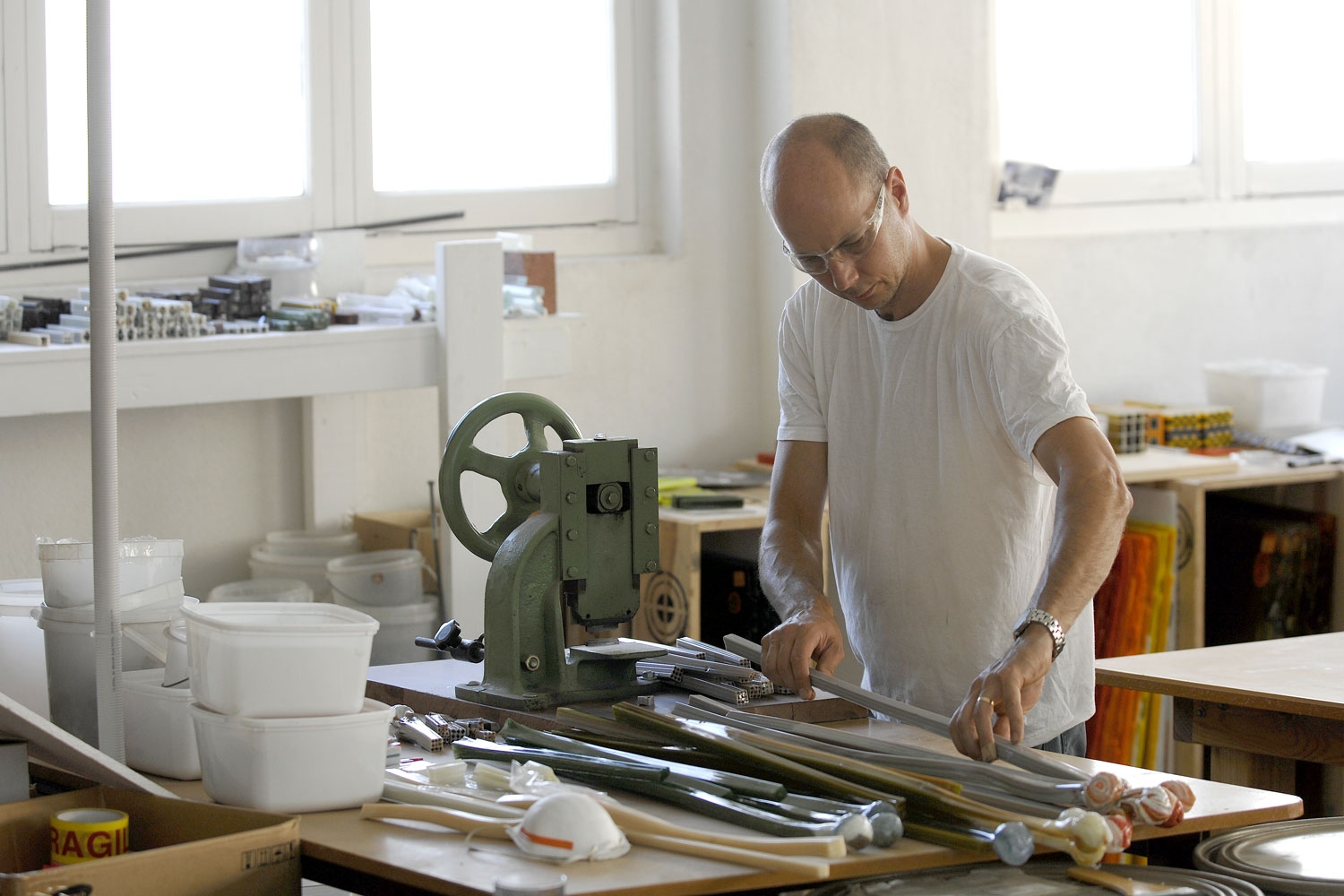
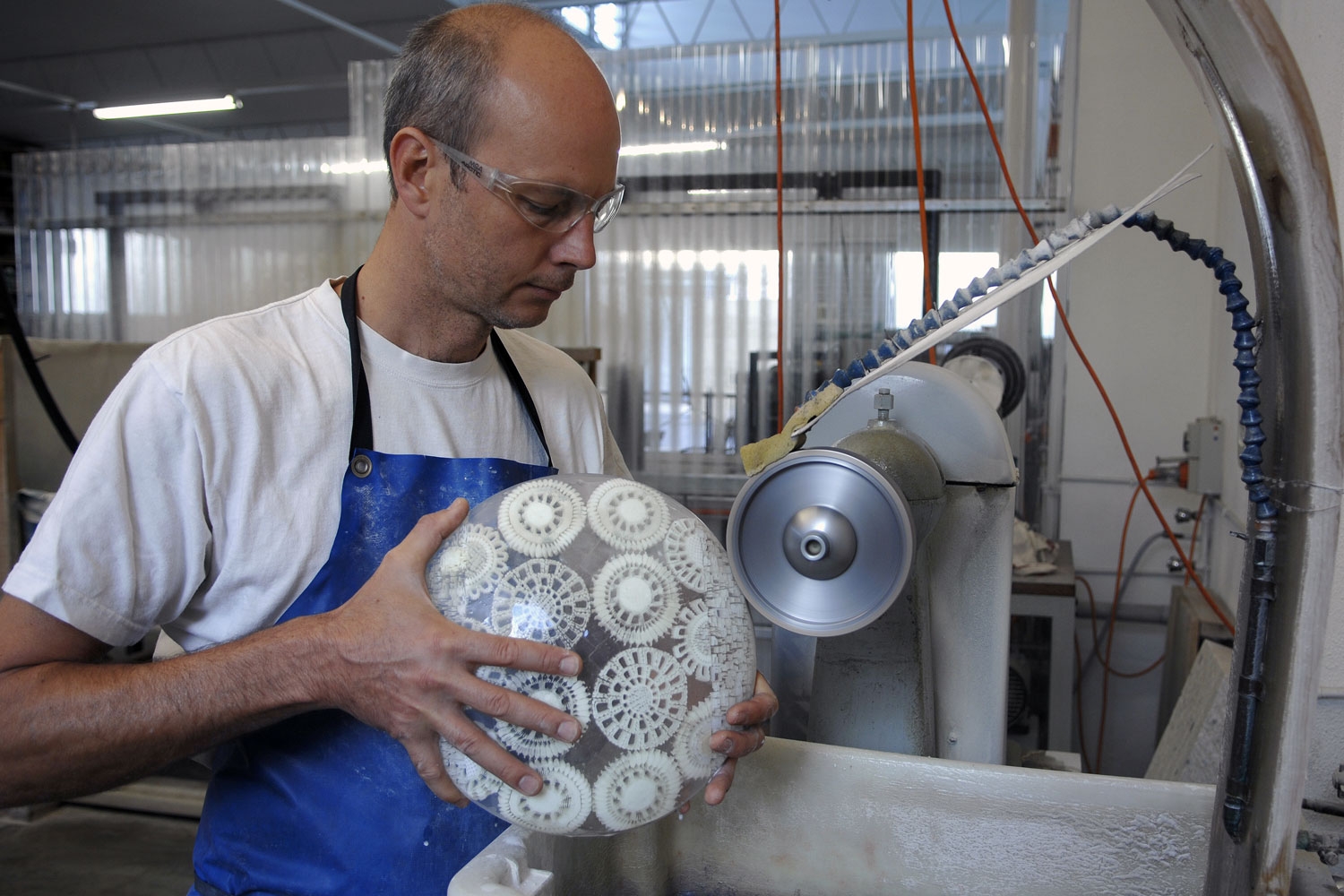

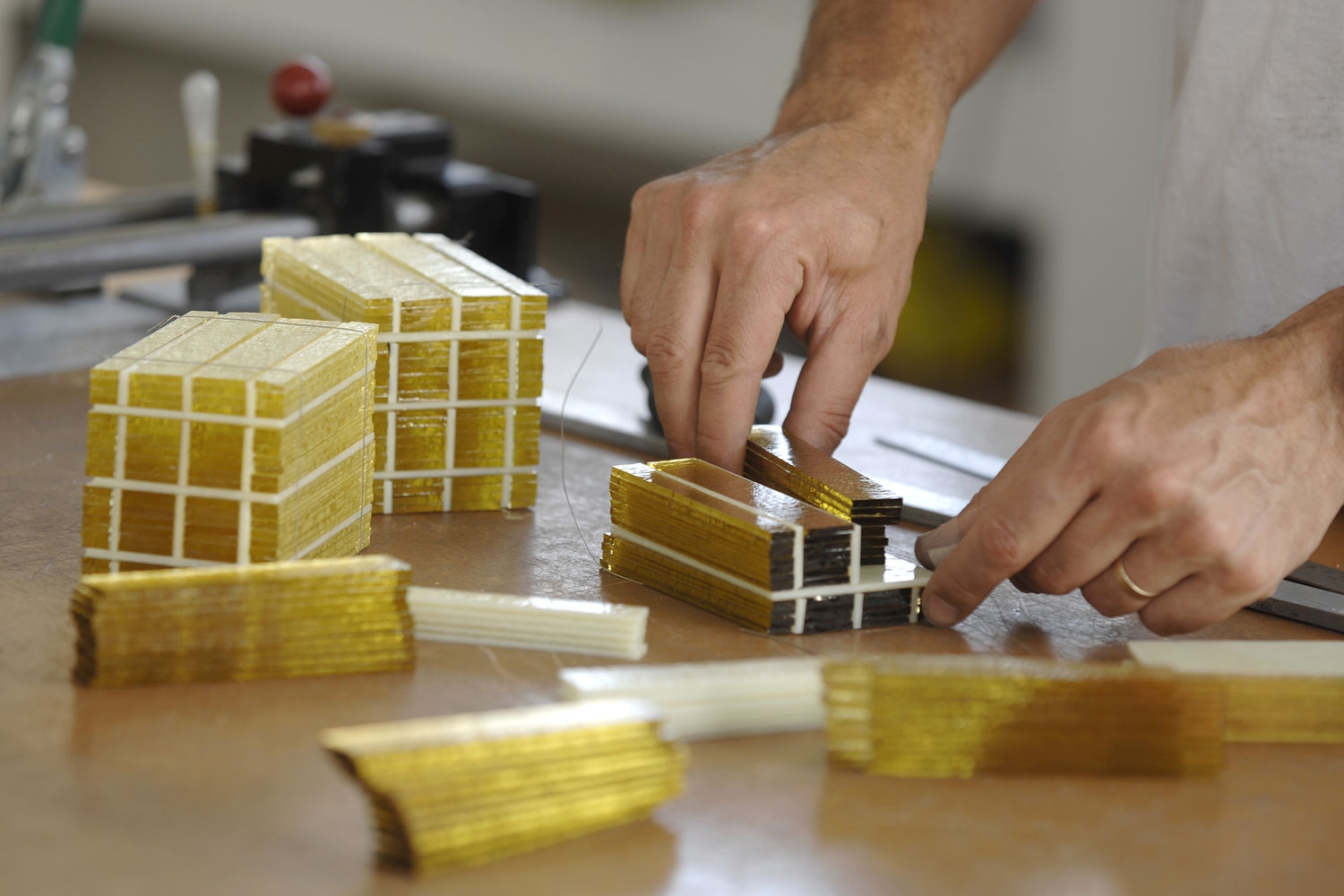
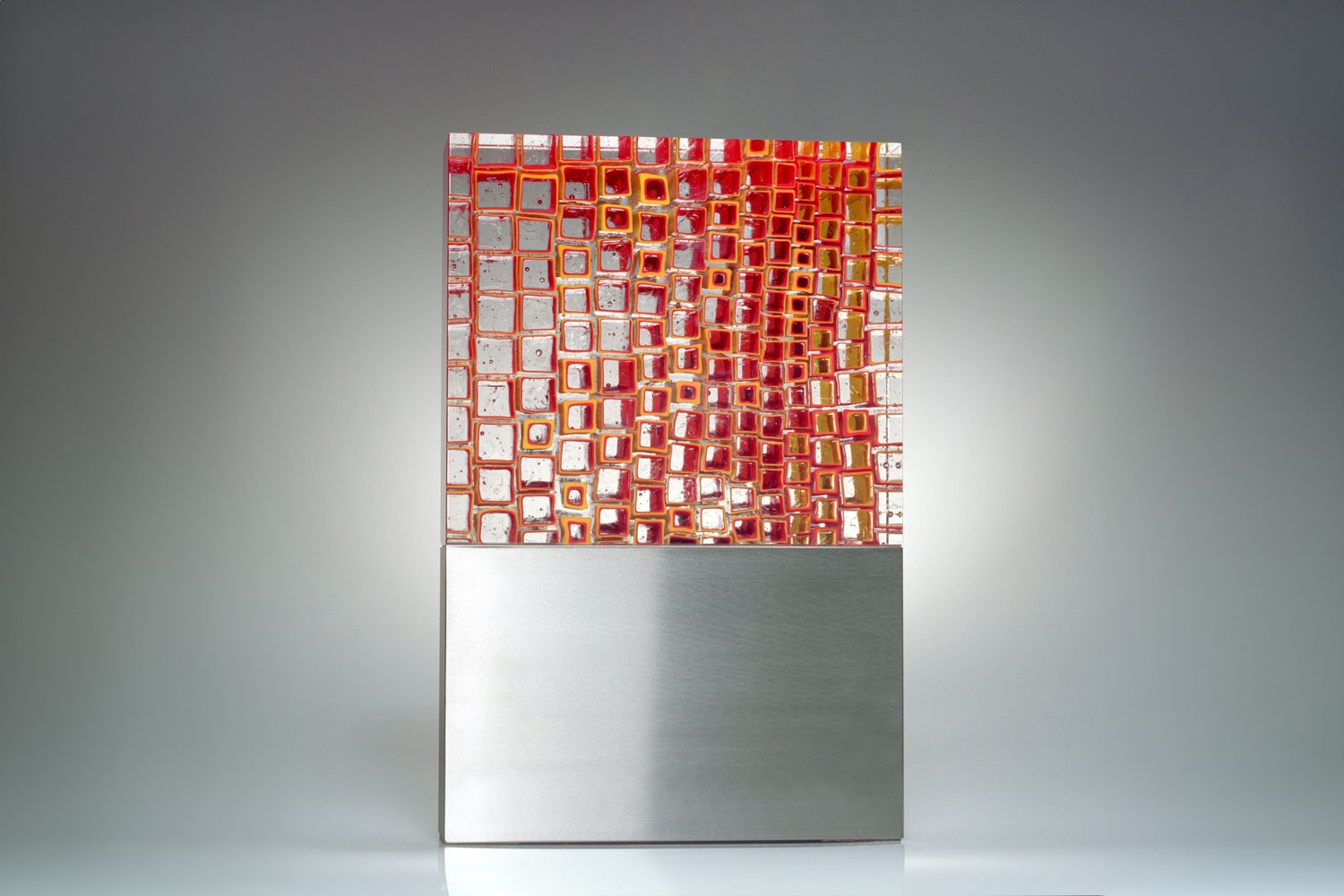





Adopting the complex process of murrini, Giles Bettison layers patterns and colours to create intricate works of glass art. Now based near Adelaide, Giles grew up surrounded by the dramatic Australian landscape and continues to be inspired by it. As a teenager and young adult, he played in bands, and chose to pursue glass blowing as a form of artistic expression in his early twenties. Giles first attended the nearby University of South Australia, before getting a spot at the prestigious Canberra School of Art. "My peers inspired me, along with teachers and mentors Klaus Moje and Stephen Procter," he shares. "In murrini, I discovered a medium and technique of vast graphic possibilities." Today, his weeks-long process of heating, forming and cooling glass is inspired by the grids, rhythms and textures of rural and urban landscapes, and the highly detailed patterns of lace and woven fabrics.
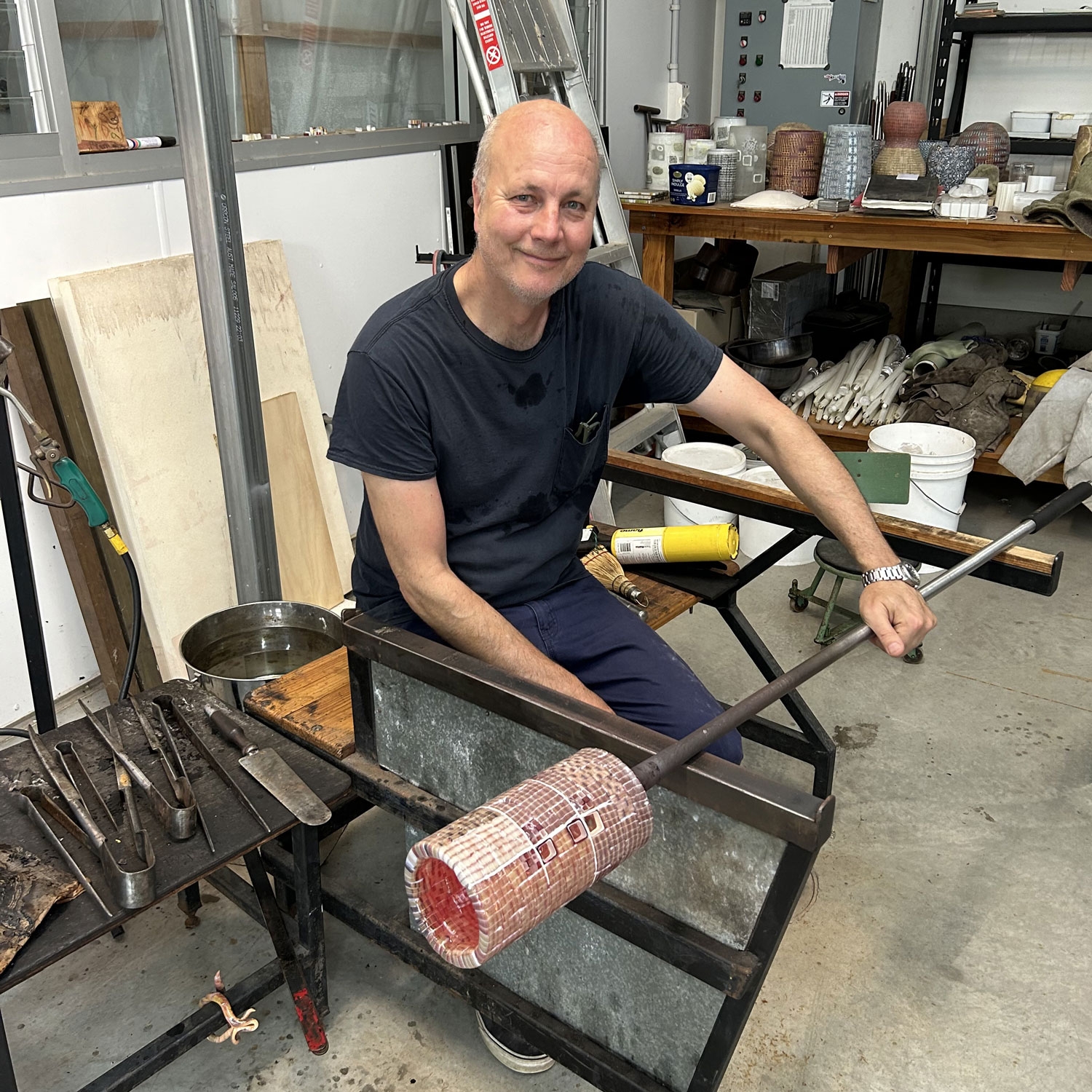

Giles Bettison